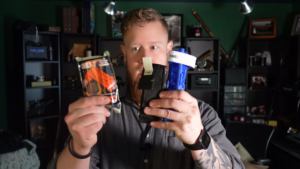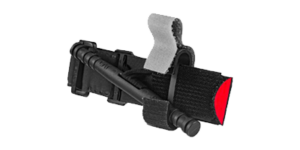Top 5 Tourniquets. Which Is Best for You? Part 1: The CAT

There are lots of options out there for tourniquets and I’m often asked which I think is the best. I also hear lots of opinions about which tourniquet is on top and why, and which TQ’s suck and why.
Over the next few weeks we’ll break down each TQ in depth to help you decide on which is the right one for you.
Next week we'll be examining the SOF-T by Tac Med Solutions.
Every TQ has its pros and cons, it’s strengths and weaknesses that make it better in some circumstances than in others. Each of these tourniquets approach the problem of bleeding control in similar methods, but in slightly different ways.
A tourniquet works by wrapping around the limb and clamping down major arteries to long bones and preventing blood loss, hemorrhagic shock, and death.
A Windlass Tourniquet is tightened by turning a stick which tightens a strap and constricts blood vessels, preventing the flow of blood past the strap.
An Elastic Tourniquet is a stretchy band wrapped tightly around the limb and constricting blood flow past the band(s).
To be considered for this list, each of these TQs must be approved by the Committee of TCCC. (Except for 2, one I love, and the other I hate…)
Let’s break down em down and help you pick the right tool for the job.

Combat Application Tourniquet (CAT)
The CAT by North American Rescue
If you need a tourniquet and someone throws you one, this is probably the one you’re going to catch. The CAT is the most popular tourniquet on the market, enjoying huge deals with the US military as well as militaries around the world to supply them with bleeding control devices.
Why You Might Love It:
- There have been many studies showing the effectiveness of the CAT. Combat vets around the world love and respect it and share stories of saving teammates with CATs.
- In the opinion of most people, the CAT is the easiest to self-apply with one hand. The method of shaking it loose and the wrapping it around an injured arm is easier than other popular TQs. If you are buying an IFAK (Individual First Aid Kit) and plan on using it to save yourself, you may prefer the CAT.
- Easiest to find. If someone is selling a legitimate tourniquet, it’s going to be the CAT you find the quickest.
Why You Might Hate It:
- I’ve heard firsthand accounts of CAT Tourniquets plastic windlasses breaking during training, or worse, during emergency bleeding situations. These accounts have been about previous generations of the CAT, but since then, after the 7th generation, these issues have been addressed and the product is exceptionally good. I’ve not heard of a failure of the Gen 7 CATs.
- The hook and loop might not work if full of sand or mud. Again, this is something I’ve heard from those who’ve experienced it, but not something I’ve witnessed myself. I’ve spent plenty of time applying TQs in sandy and muddy environments and never had an issue.
- It’s not recommended to train with the CAT you are trusting to your life. If you want to practice TQ application, (and why wouldn’t you?) you need to have a dedicated training CAT. Why?
The material quickly begins to degrade after repeated application.
The Hook and loop becomes frayed and fails to stick, the inner constricting band begins to stretch and the buckles tear through the fabric. Short story? You want a brand spanking hot off the press and as new as possible if you’re using it to save a life. Make sure to keep them out of direct sunlight when possible, to prevent degradation from sunlight UV.
My Opinion:
I trust my life and the lives of my family to the CAT. I have used it many times before and seen it work to save lives and control bleeding. This is the TQ I would prefer to have if I am going to be applying it one handed.
Next week we'll be examining the SOF-T by Tac Med Solutions.
